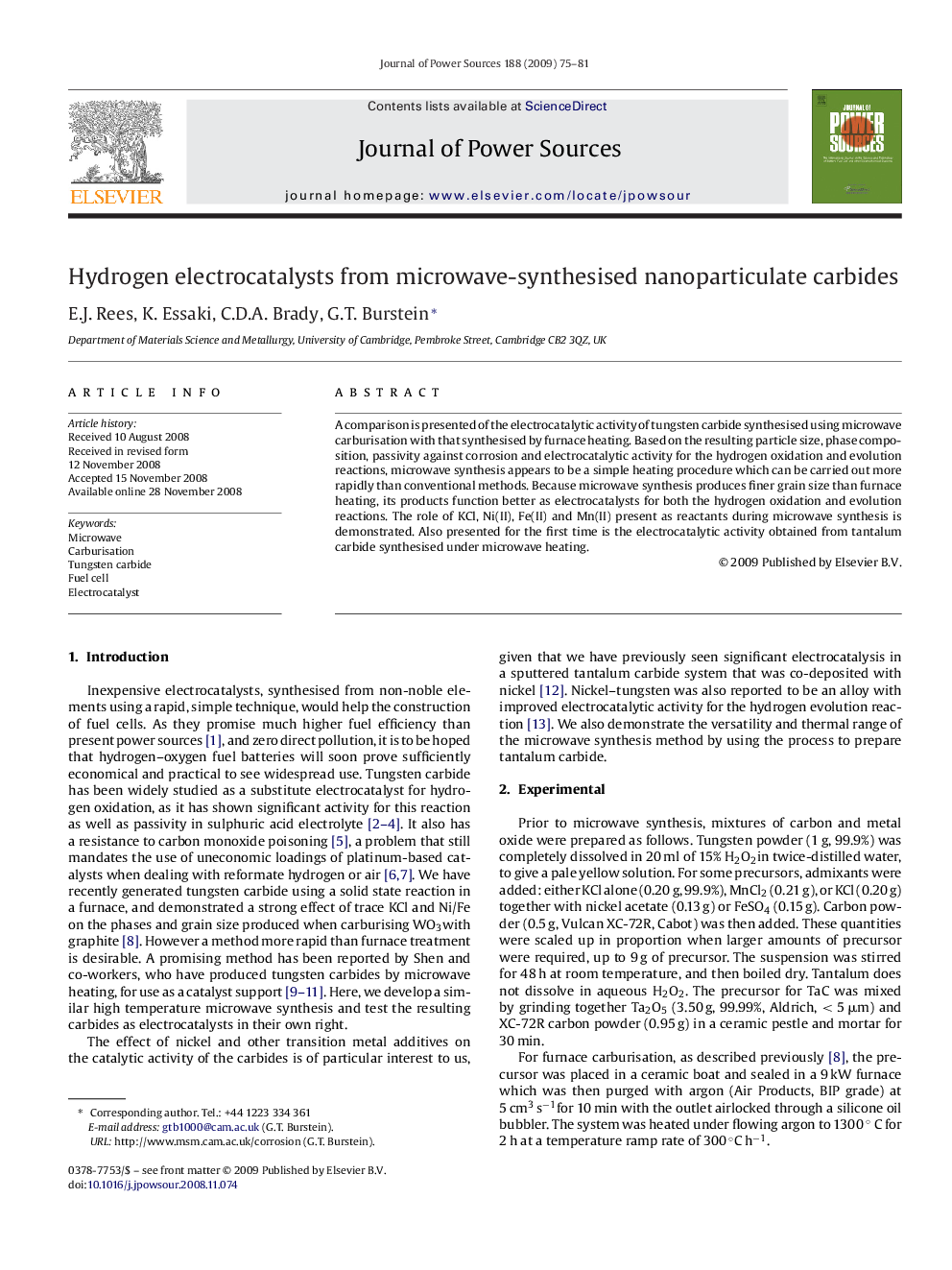| Article ID | Journal | Published Year | Pages | File Type |
|---|---|---|---|---|
| 1294316 | Journal of Power Sources | 2009 | 7 Pages |
A comparison is presented of the electrocatalytic activity of tungsten carbide synthesised using microwave carburisation with that synthesised by furnace heating. Based on the resulting particle size, phase composition, passivity against corrosion and electrocatalytic activity for the hydrogen oxidation and evolution reactions, microwave synthesis appears to be a simple heating procedure which can be carried out more rapidly than conventional methods. Because microwave synthesis produces finer grain size than furnace heating, its products function better as electrocatalysts for both the hydrogen oxidation and evolution reactions. The role of KCl, Ni(II), Fe(II) and Mn(II) present as reactants during microwave synthesis is demonstrated. Also presented for the first time is the electrocatalytic activity obtained from tantalum carbide synthesised under microwave heating.
